The Complete Guide to Cutters

In our comprehensive guide, we look at the different types of cutters/pliers that are available on the market, what the difference is between them, and what you can use them for.
What is a cutter?
Cutters are hand tools which are used for cutting a variety of materials. An average pair has two levers fixed together by a fulcrum, which is located closer to one end. The shorter part is the jaws and the longer section comprises the handles.These tools use levers to extend and increase the strength of grip. By pressing on the handles, it magnifies holding power and directs it to the point where the pincers meet. They’re very useful for a variety of applications, as they’re able to work with materials which are potentially too small for someone’s fingers.
Depending on the application, there’s a wide selection of different types available. They come in various sizes and feature a range of pincers and joints, with the three basic types being locking, adjustable, and non-adjustable.
Different types of cutters
The table below shows some of the most common types of cutters and pliers and their uses.Side/diagonal cutters
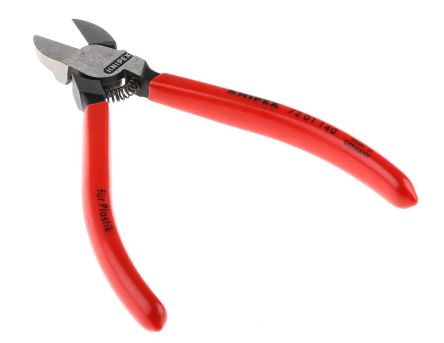
They cutters work by indenting and wedging the wire apart and offer a cleaner finish than a knife or scissors.They provide a diagonal cut and are commonly used on soft copper or aluminium electrical conductors.This tool shouldn’t be used on harder items, such as nails or screws, as these materials can cause damage and render the tool useless.
Ideal for:
- Holding, splicing or cutting leads
- Stripping insulation
Wire rope cutters
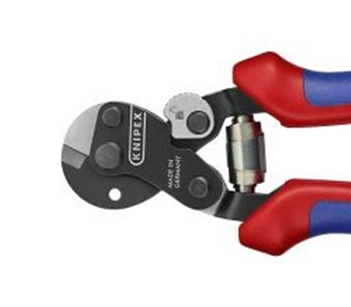
They cutters workby pulling the wire rope into the jaws and trapping it, making a clean cut and resulting in no fanning.
Ideal for:
- Shearing wire rope
Bolt cutters
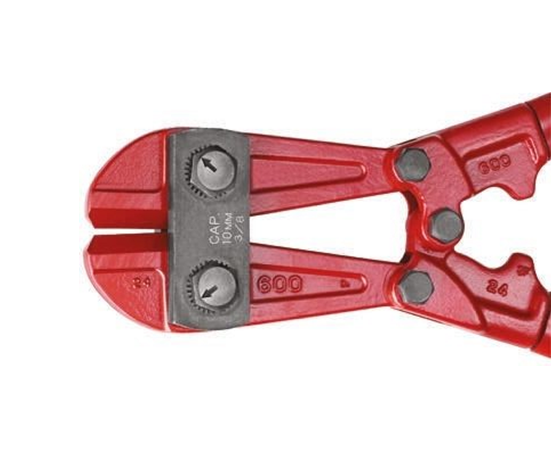
These tools are designed to create a large amount of torque in order to snip through metal easily.Thanks to their strength, they can be used on many types of metal. This has led to them being a common tool in the construction industry.
Ideal for:
- Snipping bolts off containers
- Cutting through thick chains and leads
Needle/snipe nose cutters
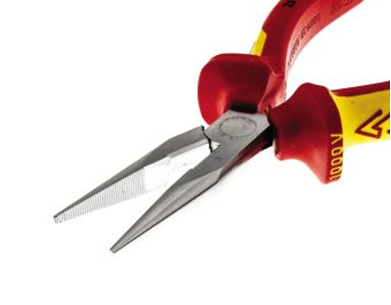
Needle nose, also known as snipe nose, are designed to hold and snip objects.The jaw of this tool is elongated for precision and contains an edge for cutting near the base. They are a popular choice across a range of industries, including: armouring, electrical, fishing, jewellery making and network engineering.
Ideal for:
- Bending or shaping wire
End cutters (nippers)

End cutters, also known as nippers, have a head that is almost flat. This allows the tool tonip close against the surface of something without digging into it.
Ideal for working with:
- Leads
- Springs
- Nails
- Bolts
- Rivets
Wire cutters
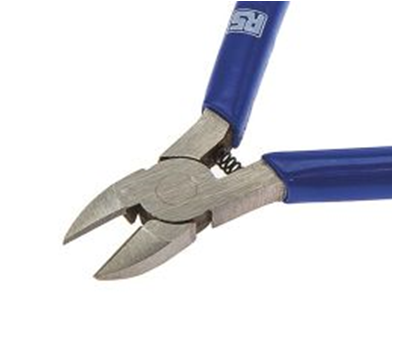
These are common in electrical applications. Almost all varieties are available in insulated versions to prevent electrical shocks.However, it’s still important not to confuse the plastic or rubber coating on the levers of the normal tools for being electrical insulation.
Ideal for:
- Domestic applications
- Industrial applications
Flush cutters
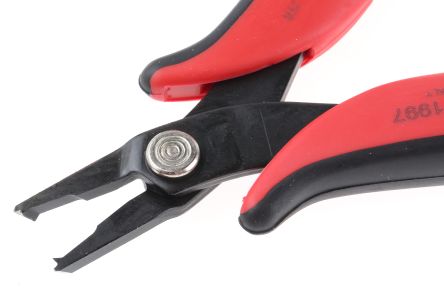
Flush cutters include pincers that are angled and narrow, while the handles are lifted away so there’s enough space to hold them securely. This type of tool is used for regular, soft and half hard metal. It’s worth noting that you should only use this tool on flat surfaces.
Ideal for trimming:
- Eyepins
- Headpins
- Beading wire
Linemans cutters
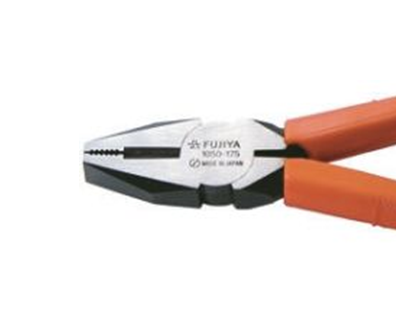
Linemans cutterseasily identified by their pincers, which have a shorter gripping surface at the tip and a cutting surface in the middle. They are a popular tool in electrical and communications tasks, plus construction work.
Ideal for grasping, splicing or chopping:
- Leads
- Strip insulation
Flat nose pliers
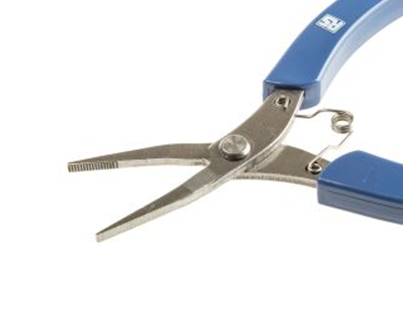
These are a common type of plier used in a variety of applications.They’re available with either a short or long nose and are able to easily make sharp bends and right angles in wire, as well straighten it.
Ideal for:
- Grasping, turning, bending and twisting wires.
Other types of cutters
Hydraulic
Hand held hydraulic cutters can be used on a variety of conductors, wire ropes and even solid bars. They feature a guillotine-style head shear to minimise jams. These tools are mainly used in the power utility and electrical industry for chopping copper/aluminium power cables and overhead conductors. A range of models are available, such as manual, battery or remote hydraulic head, with different styles of tool heads including ratchet, guillotine and scissor type.Bent nose
These are a common type of plier used in a variety of applications to grasp, turn and bend wires. The flat jaws are used for gripping and twisting wires and other objects. It’s a common tool in electrical and mechanical industries. They’re available with either short or long noses and are able to easily make sharp bends and right angles in wire, as well straighten it.Common cutter uses
Wires
Side cutters are used on wire and the leads of components in electronics, as well as to strip insulation. Stripping wires refers to safely removing the outer layer of armour without nicking the conductors underneath. If they do get nicked, the connection may break or it could cause an electrical short. Although a knife can do this task, this risks damaging the copper by catching or damaging it.Nails and screws
For this job, use a pair of bolt cutters. Position the tool at the deepest possible position on the shank of the screw or nail. If it’s fastened too tightly to reach the shank, snip the head instead.Tips on how to use cutters
Here are some tips for using cutters, as well as important safety procedures to follow to avoid injury:- Wear safety goggles if there’s a potential hazard from flying particles
- Try to cut at right angles and avoid wiggling the tool or bending wire back and forth against the edges
- They’re not designed for use on nuts and bolts, instead use a wrench.
- Avoid cutting hardened wire unless the tool is specifically designed for this task – it’s better to use something sturdier for this job as thinner types, such as needle nose, can get damaged
- Oil them regularly with a drop of oil on the hinge – this will make the tools easier to use
- Try not to expose them to excessive heat
- Don’t use cushioned levers for jobs which need tools with electrically insulated ones, as it won’t protect against an electric shock
- Choose tools that have a grip span between 6cm and 9cm, to prevent hands or fingers from getting pinched when the tools are closed
- Make sure the edges of the tool are sharp, as blunt and worn edges need a lot more force to accurately chop an object
- Ensure the tool is clean and sharp, because greasy or worn down edges can compromise safety and could cause repetitive strain injuries
- Refrain from hammering on cutters in order to cut objects
- When using pliers, pull on them instead of pushing away when applying pressure. That’s because if the tools slips accidentally, the user could lose balance or bang against the equipment which could cause an injury
Below are some of the most popular brands for cutters and pliers – please click through to see the wide choice of products available:
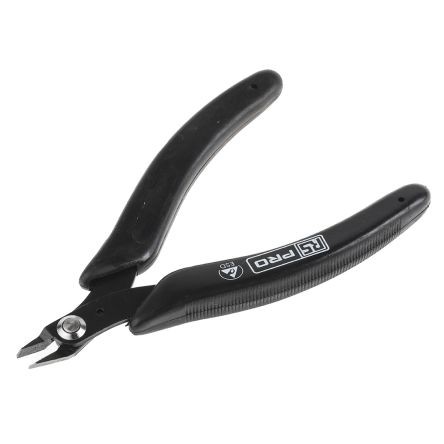
RS PRO
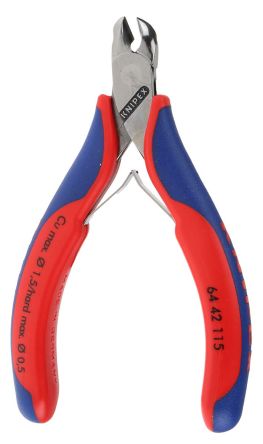
Knipex
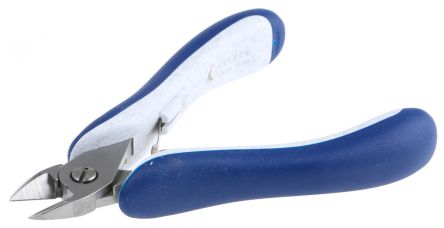
Idealtek